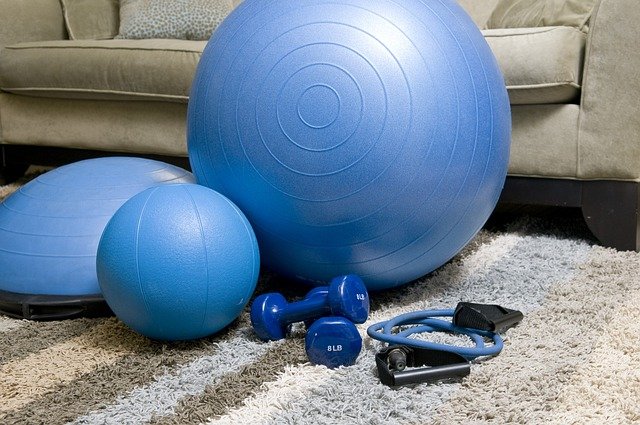We envision a world where everyone has the tools and knowledge to live a balanced, healthy, and fulfilling life. By providing reliable resources, personalized programs, and community support, we aim to be a beacon of hope for those on their health journey.
Table of Contents
Introduction to Home Workouts
In recent years, the concept of home workouts has gained significant traction, driven largely by the global COVID-19 pandemic. As gym facilities closed their doors and public spaces became less accessible, individuals sought alternatives to maintain their fitness regimes. This shift has not only heightened awareness of the benefits of exercising at home but has also revolutionized the fitness landscape. Now, more than ever, people are recognizing that they can achieve their fitness goals without the need for a gym membership or specialized equipment.
The rise of home workouts brings with it a remarkable increase in accessibility for various demographics. Today, individuals of all fitness levels are embracing exercise in the comfort of their own homes. Online platforms, such as fitness apps and streaming services, cater to diverse workout preferences, providing guided sessions ranging from yoga and pilates to high-intensity interval training (HIIT) and strength training. This accessibility means that anyone with an internet connection can embark on a fitness journey tailored to their specific needs.
The advantages of home workouts extend beyond mere convenience. Exercising at home allows for a personalized experience that can reduce anxiety and promote self-confidence. There is no need to navigate crowded gym spaces or feel pressured by the presence of others. Furthermore, home workouts often save time, eliminating the commute to and from a gym. Individuals can easily fit exercise into their daily routines, whether during lunch breaks, early mornings, or late evenings.
Another key benefit is the potential for cost savings. By opting for home workouts, individuals can avoid expenses commonly associated with gym memberships, class fees, and travel costs. With a plethora of free resources available online, it is now possible to maintain a successful fitness regime without breaking the bank. The combination of rising popularity, enhanced accessibility, and numerous benefits positions home workouts as a truly viable option for fostering a healthy lifestyle.
Benefits of Working Out at Home
Working out at home has gained significant popularity due to its myriad benefits. One of the primary advantages is convenience. With home workouts, individuals can exercise at any time that suits their schedule, eliminating the need to navigate to a gym or fitness center. This flexibility allows for spontaneous workout sessions, making it easier to maintain a consistent fitness routine.
Cost-effectiveness is another critical benefit of exercising at home. Traditional gym memberships can be costly, often involving initiation fees and monthly dues. In contrast, home workouts require minimal investment. Many effective exercises can be performed using just body weight, and there are numerous free resources available online, including videos and apps, that provide extensive workout plans without requiring financial commitment.
Time savings also play a crucial role in the appeal of home workouts. By eliminating travel time to and from the gym, individuals can maximize their available workout minutes. This aspect is particularly beneficial for busy professionals or parents, as it allows them to integrate fitness into their routines without the added pressure of gym schedules. Moreover, workouts can be shortened or tailored to fit into even the busiest of days, fostering greater adherence to fitness goals.
Another significant advantage of exercising at home is the ability to customize workouts according to personal preferences and fitness levels. Individuals can select exercises that resonate with their interests, making workouts more enjoyable. This personalization promotes motivation and engagement, which are critical factors in ensuring long-term commitment to fitness. Furthermore, home workouts can cater to specific agendas, whether focusing on strength training, cardiovascular health, or flexibility.
Ultimately, the combination of convenience, cost-effectiveness, time savings, and customization empowers individuals to adopt a more consistent and fulfilling approach to their fitness journey.
Types of Home Workouts
Home workouts can be categorized into several types, each catering to different fitness levels and preferences. Understanding these categories enables individuals to tailor their exercise routines according to their personal goals and available resources.
Bodyweight Exercises: Bodyweight workouts utilize an individual’s own weight for resistance and require no equipment. Exercises such as push-ups, squats, and lunges can be performed anywhere in the home. This category emphasizes strength, flexibility, and endurance, offering a comprehensive workout without the need for gym equipment.
Resistance Training: Resistance training involves employing external resistance to build muscle strength and endurance. This can be achieved using free weights, resistance bands, or even household items like water bottles. This type of workout is ideal for those seeking to increase muscle mass, as well as for those aiming to improve overall muscle tone and fitness levels.
Yoga: Yoga is a practice that combines physical postures, breathing exercises, and meditation. It promotes flexibility, balance, and stress relief. Various styles of yoga, such as Hatha, Vinyasa, and Yin, can be adapted for home practice, and many online resources provide guided sessions, making it accessible for all skill levels.
Pilates: Pilates focuses on core strength and stability, emphasizing controlled movement and precise breathing patterns. It often uses specialized equipment but can also be performed on a mat. Pilates workouts enhance overall muscle strength, posture, and alignment, making them an excellent addition to any home fitness routine.
Cardio Workouts: Cardiovascular workouts are essential for improving heart health and burning calories. Activities such as jumping jacks, running in place, or engaging in dance routines can be easily incorporated into home workouts. These exercises typically raise the heart rate and encourage endurance, contributing to overall fitness.
By exploring these diverse types of home workouts, individuals can create effective routines that align with their personal fitness objectives and preferences, all within the comfort of their own living space.
Essential Equipment for Effective Home Workouts
Creating an effective home workout regime requires a selection of essential equipment that caters to a variety of fitness goals. By carefully choosing the right tools, individuals can significantly enhance their exercise experience, making workouts more productive and enjoyable. The following items are highly recommended for anyone looking to establish a robust fitness routine at home.
Dumbbells are a versatile piece of equipment that should be a staple for any home gym. They come in various weights, allowing users to progressively challenge their strength. Using dumbbells can effectively target multiple muscle groups, improving overall strength and tone. For those starting with a limited budget, adjustable dumbbells provide an economical solution, enabling easy weight modification without requiring extensive storage space.
Resistance bands are another valuable addition to home workouts. These lightweight and portable bands can be used for a wide range of exercises, from strength training to rehabilitation workouts. Available in various levels of resistance, they cater to users at all fitness levels, making them an excellent option for both beginners and experienced individuals. Their compact nature makes them ideal for small living spaces.
An exercise mat is essential for comfort and safety during floor workouts, stretching, or yoga sessions. Opting for a mat with adequate cushioning is important to prevent injuries and enhance performance. Many affordable yet high-quality mats exist in the market, making them accessible to everyone.
Lastly, incorporating a cardio machine, such as a stationary bike or treadmill, can help boost cardiovascular health. While these machines can be an investment, there are budget-friendly, space-efficient options like foldable treadmills or compact exercise bikes that do not compromise on quality.
By equipping a home workout space with these essential tools, individuals can maximize their fitness potential from the comfort of their own homes. Properly chosen equipment not only aids in achieving fitness goals but also fosters consistency and motivation in home workouts.
Creating a Home Workout Space
Establishing a dedicated home workout space can significantly enhance your motivation and productivity during exercise sessions. The importance of choosing the right location within your home cannot be overstated. Ideally, the area selected should be spacious enough to accommodate your chosen workout routines, whether you prefer yoga, strength training, or high-intensity interval training (HIIT). Additionally, consider a location that allows you to minimize distractions, ensuring that your focus remains on your fitness goals.
Once a suitable area is identified, organization of equipment is crucial. Depending on the type of workouts you intend to pursue, it may be beneficial to invest in versatile equipment such as resistance bands, dumbbells, or a yoga mat. Ensuring that these items are easily accessible can streamline your transition into workout mode, reducing the likelihood of procrastination. Using shelving units or designated storage bins can help keep your space tidy, allowing for an efficient movement between exercises.
Lighting also plays a vital role in creating an inviting atmosphere for your workouts. Natural light is preferable, as it can uplift your mood and energy levels; hence, consider setting up your workout space near a window. If this is not feasible, opt for soft, bright artificial lighting to maintain visibility without creating an overly harsh environment. Complementing the lighting with calming elements such as plants or wall art can foster a pleasant ambiance, making your workouts more enjoyable.
Ultimately, a well-designed home workout space not only caters to your physical fitness needs but also promotes a positive mental environment, encouraging consistency in your exercise regimen. By thoughtfully considering space selection, equipment organization, and overall atmosphere, you can create an inspiring workspace that turns your home into a personal fitness haven.
Sample Home Workout Plans
Creating an effective home workout plan is essential for anyone looking to achieve their fitness goals without the need for a gym. These sample workout routines are structured to cater to varying fitness levels: beginner, intermediate, and advanced. Each plan focuses on a combination of strength training, cardiovascular exercises, and flexibility routines to ensure a balanced approach to fitness.
For beginners, a simple yet effective plan might include bodyweight exercises such as push-ups, squats, and lunges. A typical week could involve three to four days of workouts, each lasting about 20 to 30 minutes. For instance, on Monday, a beginner might perform 2 sets of 10 push-ups, 15 squats, and 10 lunges, followed by a 5-minute walk to cool down. This manageable routine encourages consistency while building a solid foundation.
As individuals progress to an intermediate level, their workout plans can incorporate more complexity and intensity. This could include circuits that combine different exercises, such as jumping jacks, dumbbell lifts, and planks. An optimal weekly schedule might involve five days of training, with 30 to 45 minutes dedicated to each session. For example, a circuit could involve 3 rounds of 12 reps each of dumbbell presses, lunges, and mountain climbers, totaling approximately 30 minutes of active engagement.
Advanced fitness enthusiasts may wish to challenge themselves by integrating high-intensity interval training (HIIT) into their regimen. This plan might include six days of workouts, each lasting 45 to 60 minutes. A sample workout could consist of short bursts of intense exercises, such as burpees or kettlebell swings, alternating with rest periods. This approach not only maximizes calorie burn but also enhances cardiovascular fitness and muscle strength.
Overall, adapting these sample home workout plans to fit individual goals and preferences is key to maintaining motivation and achieving lasting results.
Online Resources and Apps for Home Workouts
As more individuals look to engage in fitness routines from the comfort of their homes, various online resources and mobile applications have emerged to meet this demand. These platforms offer an extensive range of guided home workouts, catering to different preferences, fitness levels, and styles. Whether you’re seeking to enhance your strength, boost cardiovascular fitness, or engage in mindfulness practices, there is an abundance of resources available.
One prominent option is YouTube, which features numerous channels dedicated to home workouts. Channels such as “Fitness Blender” and “POPSUGAR Fitness” present a wide array of workout routines, from HIIT and dance workouts to yoga and pilates sessions. These channels typically offer free content, allowing viewers to access expert-led classes without any financial commitment, making them an excellent choice for beginners or those trying to explore different styles of fitness.
In addition to YouTube, fitness apps have gained significant popularity among home workout enthusiasts. Applications like “MyFitnessPal,” “Nike Training Club,” and “FitOn” provide users with personalized workout plans, nutritional advice, and guided classes. Some of these apps offer free versions with limited features, while others operate on a subscription model, giving users access to a broader range of content, including premium trainers and specialized programs.
For those who desire a more interactive experience, online platforms such as “Peloton” and “Beachbody On Demand” have revolutionized home workouts. While these services require a subscription, they provide a comprehensive library of workouts led by professional trainers. Subscribers can participate in live classes, track their progress, and join virtual communities that foster motivation and accountability.
In summary, the options for engaging in home workouts have never been more abundant. By exploring various online resources, apps, and YouTube channels, individuals can easily identify the workout styles that best suit their preferences and fitness goals.
Staying Motivated While Working Out at Home
Staying motivated during home workouts can often pose challenges, particularly due to the lack of a structured environment typically found in gyms. However, implementing specific strategies can significantly enhance your motivation levels. One effective approach is setting clear and attainable fitness goals. By establishing both short-term and long-term objectives, you provide yourself with a roadmap for progress that can make your home workouts feel more purposeful. For example, setting a goal to increase your strength or participate in a specific fitness event can create a sense of urgency and excitement surrounding your workouts.
Another successful strategy involves tracking your progress. Keeping a workout journal or using fitness tracking apps allows you to visualize your improvements over time. Monitoring metrics such as the number of repetitions, exercise duration, and overall time spent working out can serve as tangible evidence of your progress, which can be a powerful motivator. Additionally, regularly reassessing and adjusting your goals based on your progress can ensure that you remain challenged and engaged in your fitness journey.
Joining online fitness communities can also play a crucial role in maintaining motivation. These platforms provide access to like-minded individuals who share similar fitness goals and experiences. Engaging with others through forums, social media, or fitness applications can offer encouragement, advice, and a sense of accountability, ensuring that you remain focused on your home workout regimen.
Incorporating variety into your workout routines is essential for maintaining engagement and preventing monotony. Trying different types of exercises, classes, or formats—such as HIIT, yoga, or strength training—can invigorate your routine and keep you excited about your progression. By blending multiple modalities, you can not only sustain your interest but also improve your overall fitness profile. Following these strategies will not only enhance your motivation but also help you achieve your fitness objectives while working out at home.
Conclusion: Embracing Fitness at Home
In the fast-paced world we live in, the importance of maintaining a healthy lifestyle cannot be overstated. Home workouts offer a practical solution for individuals seeking to achieve their fitness goals without the constraints of time and location. Throughout this guide, we have highlighted the numerous advantages of exercising at home, including flexibility, cost-effectiveness, and an environment that allows for personal growth and focus.
The convenience of home workouts cannot be ignored. Unlike traditional gym environments, where commuting and scheduling can become obstacles, exercising at home enables individuals to work out on their own terms. This autonomy fosters a routine that fits seamlessly into daily life, making it easier to prioritize health and wellness. Furthermore, without the pressure of a crowded gym, many people find they can concentrate better on their fitness goals, ultimately leading to improved motivation and results.
In addition to the logistical benefits, home workouts also encourage creativity and variety in fitness. With numerous online resources, from video tutorials to mobile applications, individuals can explore a wide range of exercise options, ensuring their routines remain engaging and diverse. This diversity not only combats workout monotony but also allows individuals to tailor their fitness plans according to personal preferences, abilities, and goals.
As we conclude, it is essential to recognize that embracing fitness at home can lead to long-lasting health benefits. By incorporating regular physical activity into your daily routine, you not only enhance your physical well-being but also contribute to improved mental health. Therefore, we encourage readers to take that first step toward a healthier lifestyle by initiating their home workout journey. Remember, the path to fitness is in your hands, and the comfort of your home can be the perfect starting point for achieving your health aspirations.




